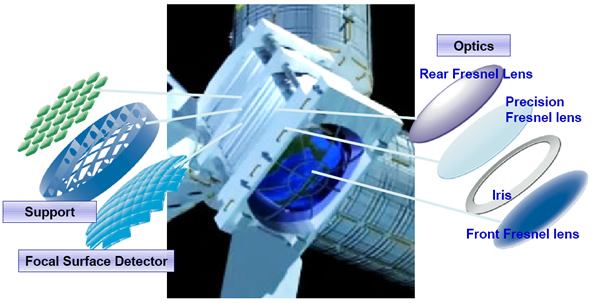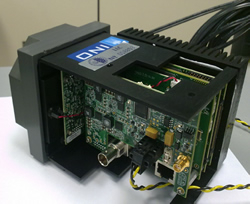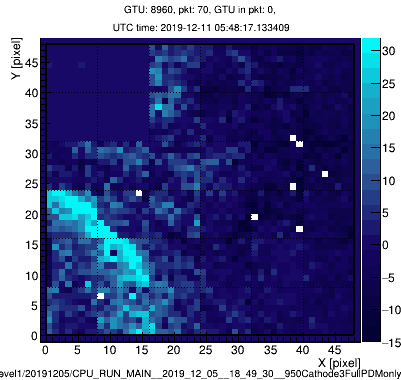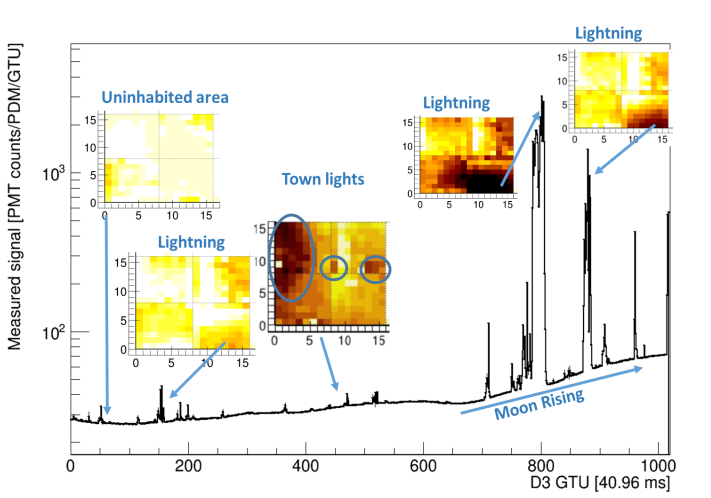JEM-EUSO
The present configuration of the JEM-EUSO instrument basically consists of an UHECR telescope assisted by an atmosphere monitoring device and controlled by a calibration system to be attached at the International Space Station or orbiting as a free flyer.
The JEM-EUSO telescope is a fast, high-pixelized, large-aperture and large field-of-view digital camera, working in the near-UV wavelength range (330÷400 nm) with single photon counting capability. The main components of the telescope are the collecting optics, the focal surface detector, the electronics and the structure. The optics system is composed of two Fresnel lenses and one diffractive precision Fresnel lens. The focal surface detector is composed by a grid of ~5000 multi-anode photomultipliers (MAPMT), 64 pixels in each, that convert the energy of the incoming photons into electric pulses. They are arranged in 137 PDM (Photon Detection Module), with 2304 pixels in each. The electronics counts-up the number of the electric pulses in time periods of 2.5 μs.
The JEM-EUSO atmosphere monitoring will use an infrared (IR) camera and a Lidar (Light Detection and Ranging) with ultraviolet laser to observe the conditions of the atmosphere in the FoV of the EECR telescope.
JEM-EUSO will be calibrated through instrumentations both onboard and on ground. The onboard calibration system is composed of a set of three LEDs with different wavelengths (from 300 to 500 nm) that will be installed in the telescope cylinder as diffusive light sources. On ground, the monitoring and calibration will be performed by a Global Light System (GLS) of lasers and xenon light sources located in 12 sites around the world, supplemented with an aircraft system.





